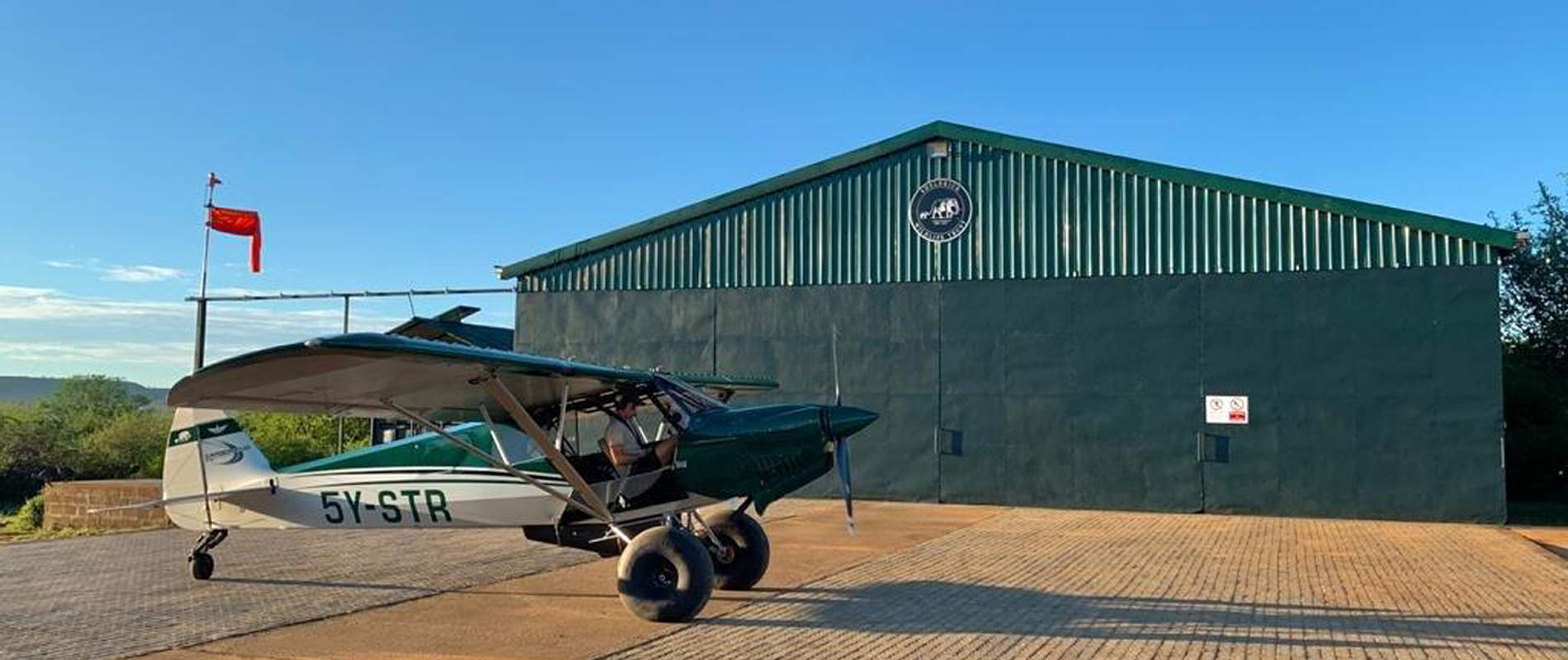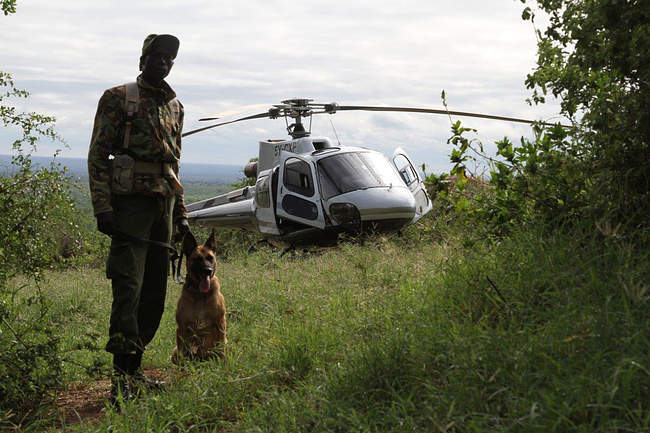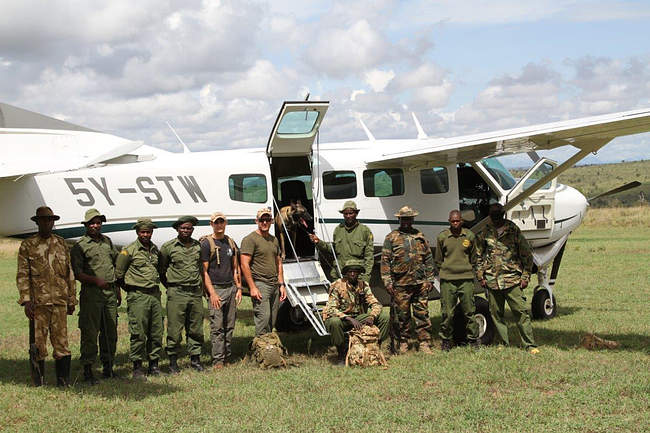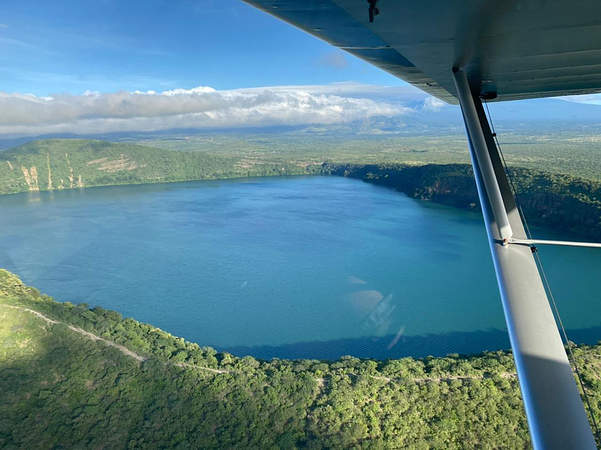There was a noticeable increase in veterinary cases in April, partially as a result of the SWT expanding anti-poaching into the Shimba Hills and Mwaluganje Elephant Sanctuary ecosystem, where 3 cases subsequently occurred.
On two separate occasions, our fixed-wing aircraft were called to assist with the treatment of an elephant with a deep snare wound around its front leg, as well as a buffalo that was caught in a snare. The buffalo miraculously broke free from its snare upon the vet's arrival, fortunately not sustaining a flesh wound, but the elephant, however, was not as lucky.
The third veterinary callout occurred well outside the Tsavo area, after a report came in from Northern Rangelands Trust about a young elephant calf that had become ensnared in a large rope snare in the riverine forest of the Tana River. This case was a perfect illustration of the value of being able to mount a quick response by helicopter: full details of this case can be read here. In addition to treatments, there was also a single rescue of an abandoned elephant calf that had unfortunately suffered terrible injuries having been attacked by a pack of hyenas. After rescuing the calf and airlifting it back to our field headquarters for intensive care, it sadly succumbed to its injuries.

There was a slight decrease in human-elephant conflict callouts as conditions dried out and elephants began withdrawing back into the National Park. However, helicopters did respond to 7 callouts, most of which were successful in removing elephants from problem areas and pushing them back into protected areas, or far enough from human settlement that they no longer posed a risk.
No fresh poaching activity was detected from the air, however, the airwing was called out on two occasions to respond to sightings on the ground. On one occasion a helicopter was used to transfer a handler and dog to Ithumba to follow fresh human footprints. The suspects escaped the Park before they could be apprehended. Bicycle tracks were also seen by a ground team in the Tsavo Triangle and an extensive search of the area was conducted by helicopter. Similarly, fresh footprints were found on the Yatta Plateau and another search was conducted by helicopter. Although nothing was seen on either occasion, the presence of the helicopter is often a strong deterrent in and of itself. While it is not yet the 'fire season', there was one fire on the eastern side of the Yatta Plateau that required intervention.
Very little charcoal and logging activity was recorded in April and what activity did take place was all outside of Tsavo, in South Kitui National Reserve. Illegal livestock grazing persists in both Tsavo East and West, with the majority occurring in Tsavo West.

No poached elephant carcasses were observed, however, a very old carcass of a female elephant was found with both tusks intact. This has been a growing trend with almost all carcasses being found now still having their tusks, which is obviously an encouraging indicator that poaching has reduced dramatically, with these elephants having succumbed to natural causes.
Other findings included 15 illegal fishermen on Lake Jipe and 3 women collecting firewood in Tsavo East National Park. Sighting highlights in the month included striped hyena and lion.



